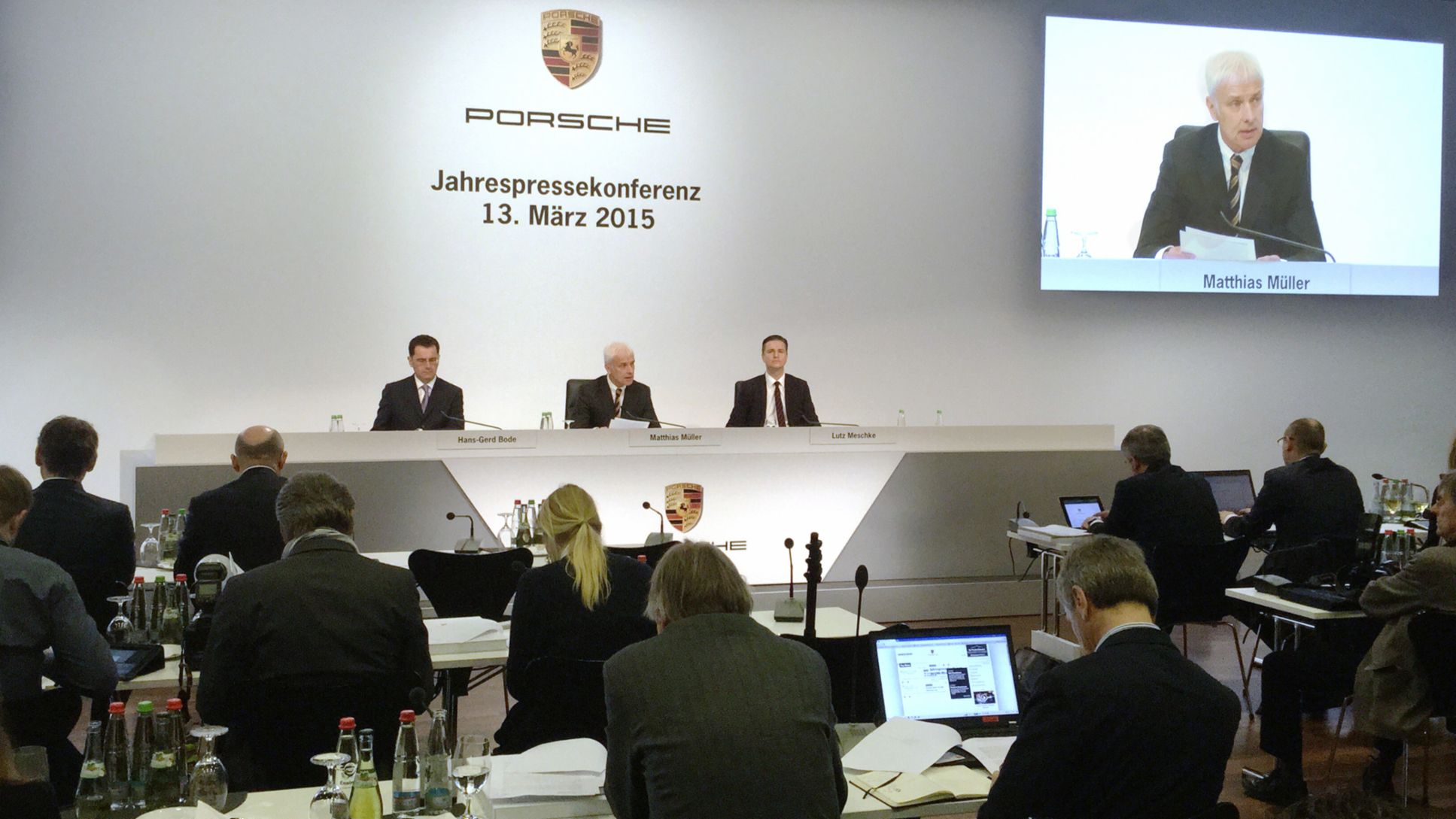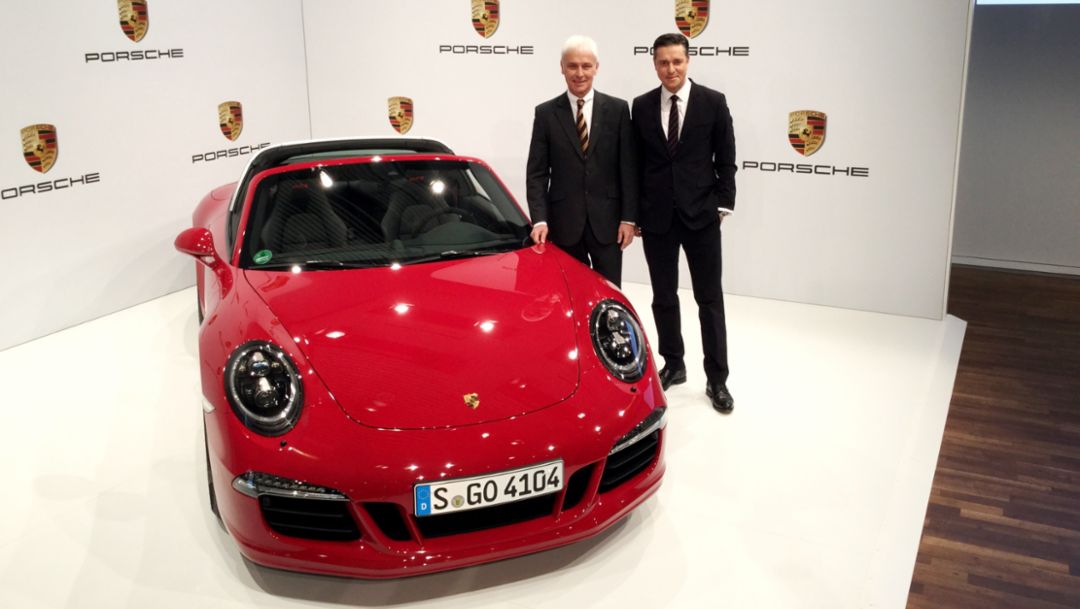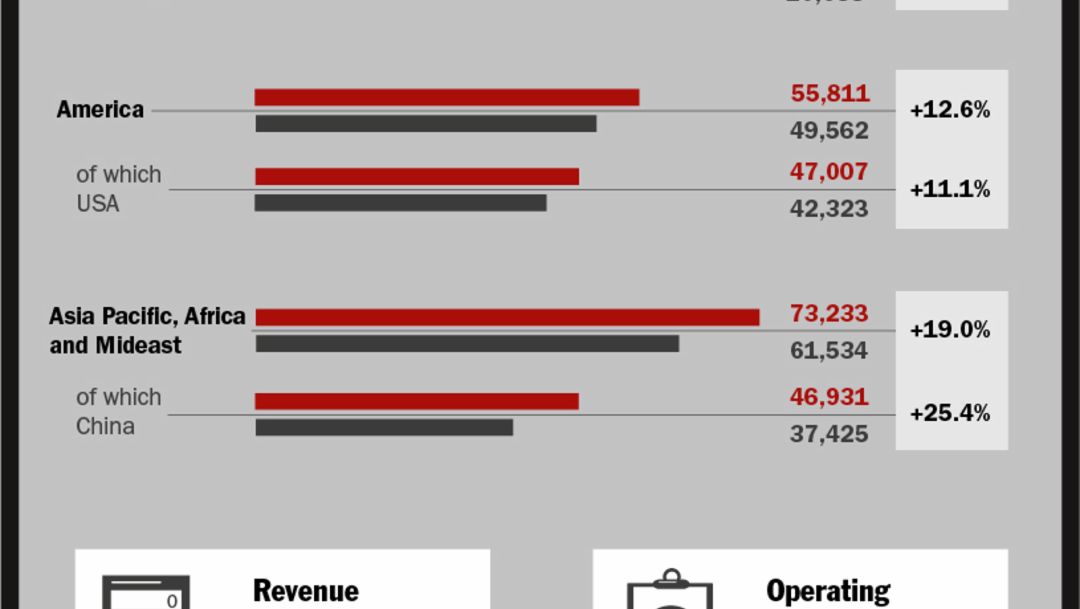With 189,849 vehicles, Porsche's deliveries were 17 per cent above the figure of the previous year. Revenue rose by one-fifth to 17.2 billion euros. The operating profit grew by just over five per cent to 2.7 billion euros. With 22,401 employees, the number of people working for Porsche reached a new peak at the end of the year. A year earlier, the figure was 19,456 employees: an increase of 15 per cent (video: left column, infographics: below).
At the annual press conference of Porsche AG in Stuttgart, which was boradcastet live at the Porsche Newsroom, CEO Matthias Müller stressed that the sports car manufacturer has reached essential objectives of the "Strategy 2018" ahead of schedule. "Porsche has developed very successfully and is now better positioned than ever", said Matthias Müller. "A crucial cornerstone for this success is the Macan. Until the end of the year, we had delivered our new five-door sports car nearly 45,000 times." With the Macan, Porsche has also won over many new customers: worldwide, three out of four Macan customers have opted for a vehicle of the Porsche brand for the first time.
The Porsche chairman took special pride in the success of the plug-in hybrid models. With this, Matthias Müller did not only refer to the 918 Spyder super sports car, which was sold out just a few months after start of delivery in March 2014; Müller especially emphasised that, in the 2014 fiscal year, Porsche was the only brand in the world that could offer its customers no fewer than three plug-in models in the premium segment: in addition to the 918 Spyder, they include the Cayenne S E-Hybrid and the Panamera S E-Hybrid.
We assume that sales and deliveries will continue to rise
CFO Lutz Meschke emphasised that the excellent performance of Porsche is also reflected in the financial situation of the company. "In 2014 we were able to completely reduce our net debt while simultaneously financing our growth – two years before the originally envisaged target date." In tangible terms, the net liquidity of the automotive business area – i.e. the gross liquidity less financial liabilities and excluding the financial services business in each case – improved from minus 899 million euros as of 31 December 2013 to plus 195 million euros as of 31 December 2014.
Matthias Müller and Lutz Meschke were optimistic in terms of the current fiscal year. "We assume that sales and deliveries in the ongoing year will continue to rise", stated the Chief Financial Officer. They also want to safeguard the profitability through continuous productivity and process improvements as well as through stringent cost management.
You can download Porsche's annual report, press relase, speeches and infographics (left column).
Consumption data
911: Combined fuel consumption: 9,0 – 8,2 l/100 km; CO₂ emissions: 211 – 191 g/km
918 Spyder: Combined fuel consumption: 3,1 – 3,0 l/100 km; CO₂ emissions: 72-70 g/km; Electricity consumption 12.7 kWh/100 km
918 Spyder (Weissach package): Combined fuel consumption: 3,0 l/100 km; CO₂ emissions: 70 g/km; Electricity consumption: 12.7 kWh/100 km
Boxster: Combined fuel consumption: 8,4 – 7,9 l/100 km; CO₂ emissions: 195 – 183 g/km
Cayman: Combined fuel consumption: 8,4 – 7,9 l/100 km; CO₂ emissions: 195 – 183 g/km
Cayenne: Combined fuel consumption: 9,2 l/100 km; CO₂ emissions: 215 g/km
Cayenne S E-Hybrid: Combined fuel consumption: 3,4 l/100 km; CO₂ emissions: 79 g/km; Electricity consumption: 20.8 kWh/100 km
Macan: Combined fuel consumption: 9,2–6,1 l/100 km; CO₂ emissions: 216–159 g/km
Panamera: Combined fuel consumption: 8,4 l/100 km; CO₂ emissions: 196 g/km
Panamera S E-Hybrid: Combined fuel consumption: 3,1 l/100 km; CO₂ emissions: 71 g/km; Electricity consumption: 16,2 kWh/100 km


